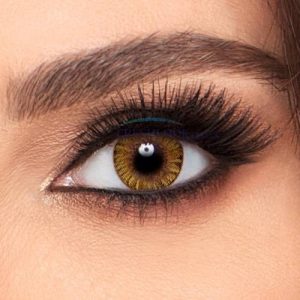Contact lenses, first invented in 1887, have revolutionized the world of vision correction. Today, they not only help enhance visual quality but also enable users to change their eye color at will. Colored contact lenses, a popular fashion accessory, come in an array of shades ranging from subtle to transformative, natural to whimsically adventurous. They offer a unique blend of form and function, giving users a chance to redefine their aesthetic identity while correcting vision impairments.
Despite their aesthetic appeal, colored contact lenses fulfill a crucial function: visual correction. There are three distinct kinds – enhancement tints, visibility tints, and opaque tints. Enhancement tints, as the name suggests, are used to intensify the natural eye color. Visibility tints are lightly colored lenses, primarily designed to prevent the lenses from being lost. Opaque tints are non-transparent lenses that change the color of your eyes completely, ideal for those looking to make a dramatically different look.

Although colored contact lenses primarily serve cosmetic purposes, they are not to be treated casually. They are, after all, medical devices, and proper precaution and hygiene should be observed while using them. It’s essential to consult an eye care professional before using 乱視用カラコン , particularly for those who have never used contact lenses before. An eye care professional will not only help determine if your eyes are suitable for contact lenses but also guide you through their correct use and maintenance.
The appeal of colored contacts extends beyond aesthetics. For actors, they are a significant part of character creation. For those with conditions like heterochromia, where the eyes are of two different colors, colored contacts can provide a symmetrical look. For others, they serve as a form of self-expression, helping them to redefine their identity.
Despite the numerous benefits, colored contact lenses come with risks. Improper use can lead to severe eye infections or even permanent loss of vision. Some of the common risks include corneal abrasions, allergic reactions, decreased vision, and conjunctivitis. Therefore, it’s imperative to seek professional advice before using colored contacts and to maintain good hygiene practices while using them.
In conclusion, colored contact lenses offer an exciting way to change one’s look while enhancing visual clarity. They’re an expression of individuality, a tool for character creation, and an accessory that can instill confidence. But like every medical device, they require responsible use. So, if you wish to venture into the world of colored contact lenses, consult an eye care professional, understand the risks, maintain a strict hygiene regime, and brace yourself for a world of colorful possibilities.